WAGYU
Project
Our Goals
Turning Historical Heritage Into Legacy for Tomorrow
Unmatched Technique
of Worldwide Acclaim
There are things that survive a century and beyond. But how many actually exist nowadays?
Meet Noriaki Numamoto, an already iconic Japanese meat specialist. He was only 15 when he set off on his journey into the world of meat.
On his way, he acquired know-how and trained in cutting and trimming meat. He became an incontestable connoisseur while purchasing cattle by the whole from Osaka’s Nanko Port wholesale market.
Ever since the relaunch of Japanese beef (wagyu) on the European market in 2014, Mr. Numamoto has been an outstanding ambassador for Japan, showcasing his mastery in butchering wagyu during demonstrations across the world, in Monaco, The Netherlands, Greece, France, Dubai, The United Arab Emirates, Russia, the US (Los Angeles, New York), China, Thailand, Mexico, and Australia, just to name a few.
The same Noriaki Numamoto has teamed up with ENYSi to launch the WAGYU Project under the theme “Caring for a century ahead.”
This way we aspire to turn this unmatched technique enjoying worldwide acclaim into a legacy for tomorrow.
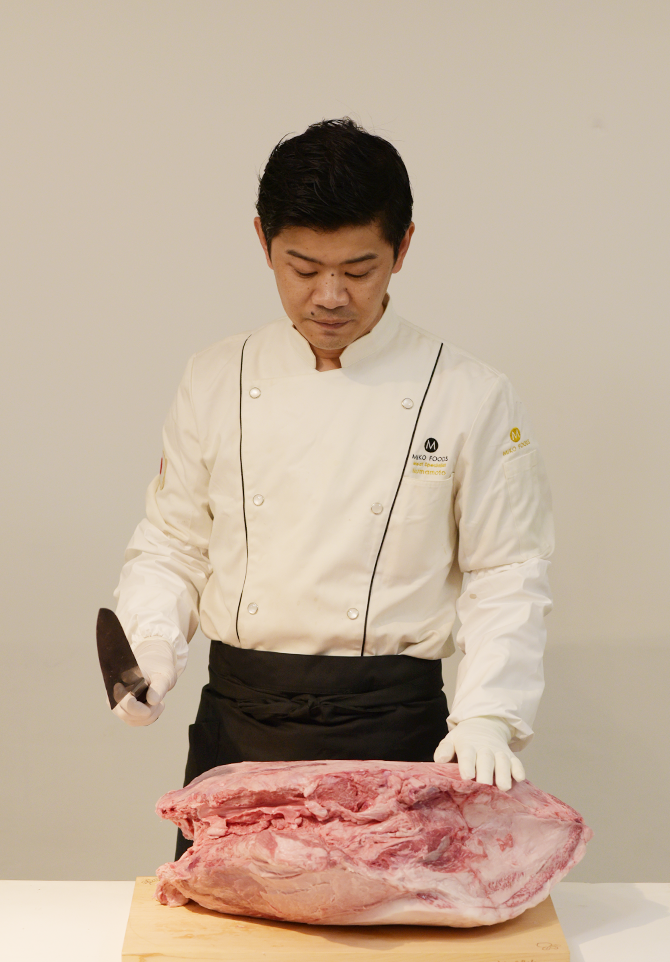
沼本 憲明 Noriaki NUMAMOTO
When meat cutting turns into art
All Mr. Numamoto needs is one knife with a 30-cm blade and he’s in business. The way he stops his cut just before the tip of his knife reaches in the meat is so artful almost like he was an artist working with the tips of his fingers. The massive chunk of beef is cut off one by one. Any paper-thin membrane-like fiber or excess fat are trimmed off with microscopic precision. This way he tries to use everything we can eat from the animal and not let any part of it go to waste. The cuts do not run against the grain, thus sparing the umami savoriness of the meat around muscle fibers and bones.
Mr. Numamoto can discern all the parts of a cattle; and each part demands a different cutting. The amount of pressure applied when passing the knife through the meat also differs. So does the cutting angle. The meat suffers no damage, nor does it bleed out. There are ways to cut meat so that it lasts well and not changes color with time. Likewise, there are ways to distinguish between tender and tough meat.
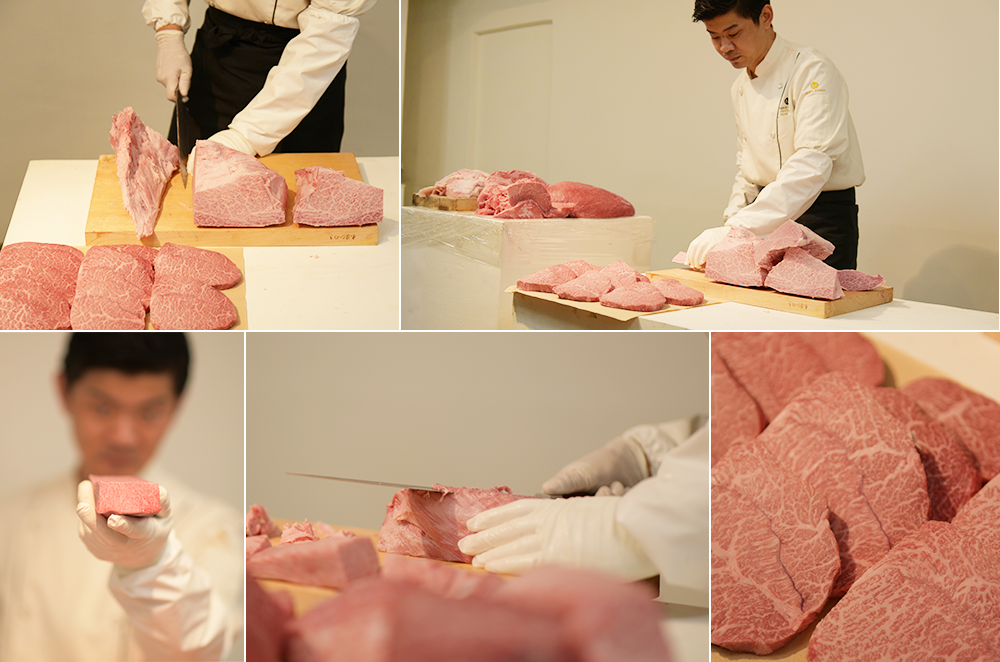
Photo by Juan Carlos PINTO
All Mr. Numamoto needs is one knife with a 30-cm blade and he’s in business. The way he stops his cut just before the tip of his knife reaches in the meat is so artful almost like he was an artist working with the tips of his fingers. The massive chunk of beef is cut off one by one. Any paper-thin membrane-like fiber or excess fat are trimmed off with microscopic precision. This way he tries to use everything we can eat from the animal and not let any part of it go to waste. The cuts do not run against the grain, thus sparing the umami savoriness of the meat around muscle fibers and bones.
Mr. Numamoto can discern all the parts of a cattle; and each part demands a different cutting. The amount of pressure applied when passing the knife through the meat also differs. So does the cutting angle. The meat suffers no damage, nor does it bleed out. There are ways to cut meat so that it lasts well and not changes color with time. Likewise, there are ways to distinguish between tender and tough meat.
Never-before-seen cuts and their best rendition
Did you think that you knew or had seen all possible cuts of meat? Well, guess what, there are still plenty more for you to discover. Take some never-before-seen cuts of beef from the hands of master butcher Noriaki Numamoto;
couple that with the savoir faire of a master chef… and—voila! A masterful experience to excite your taste buds. Guest what, as surreal to behold as this might seem, such collaborations do exist!
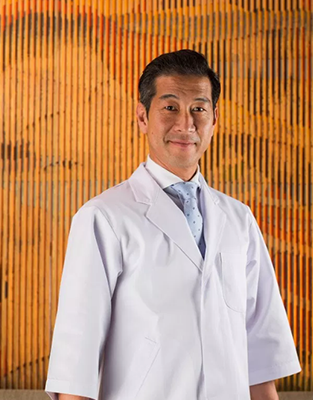

CHEF
藤山 貴朗
Takao FUJIYAMA
Ever since he was a child, he had his mind set on a culinary-related career.
Judging by the environment he grew up in, it comes as no surprise that he embarked on this path by knocking on the doors of Kodaiji Wakuden, a Japanese traditional restaurant in Kyoto—the heart of Japanese gastronomy, or washoku.
For many years, he divided his time at Wakuden between Muromachi and Kodaiji branches. At the age of 27, he became the head chef of the Muromachi branch; five years later, he was appointed head chef of the Kodaiji branch, a position he kept for another five years. Then he returned to Muromachi Wakuden as the head chef, and was also named executive chef at Kodaiji Wakuden.
His long chapter with Kodaiji Wakuden reached its end on March 2018; Chef Fujiyama is now set to open his own restaurant “Ginza Fujiyama” at the beginning of February 2019.

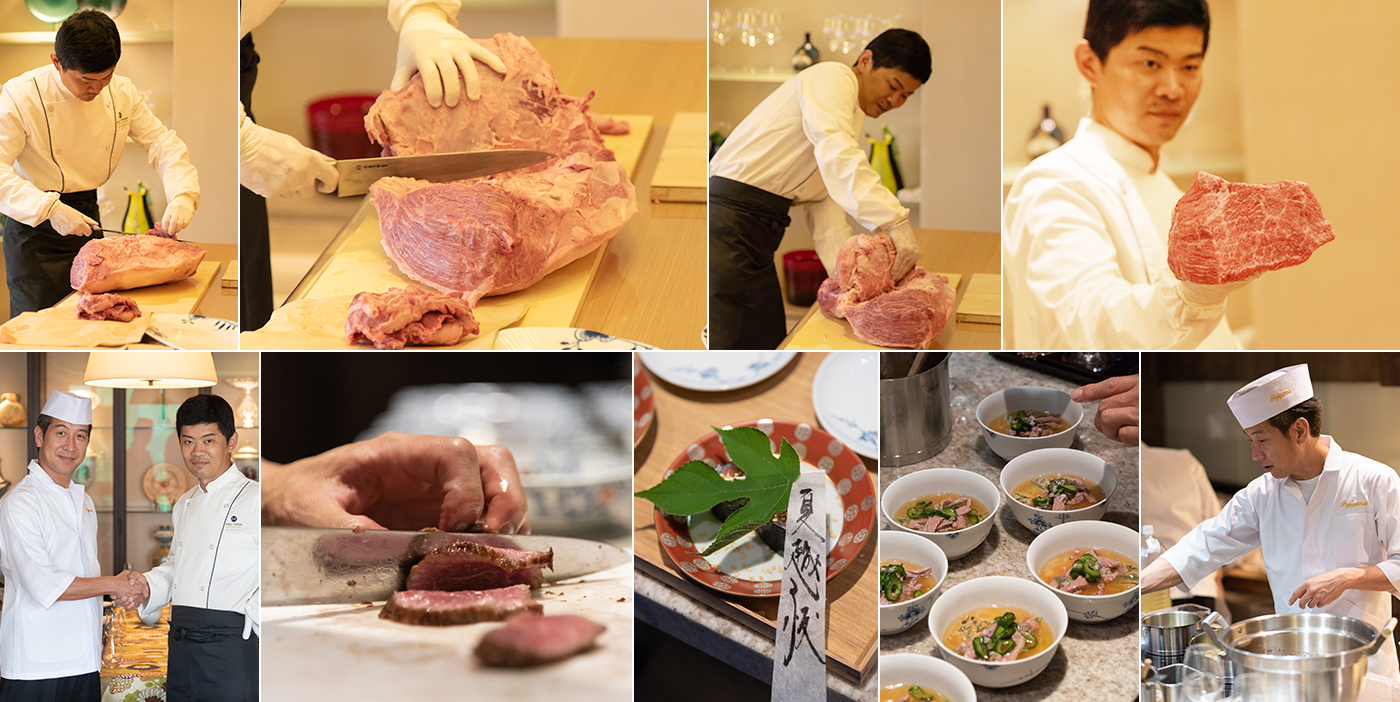
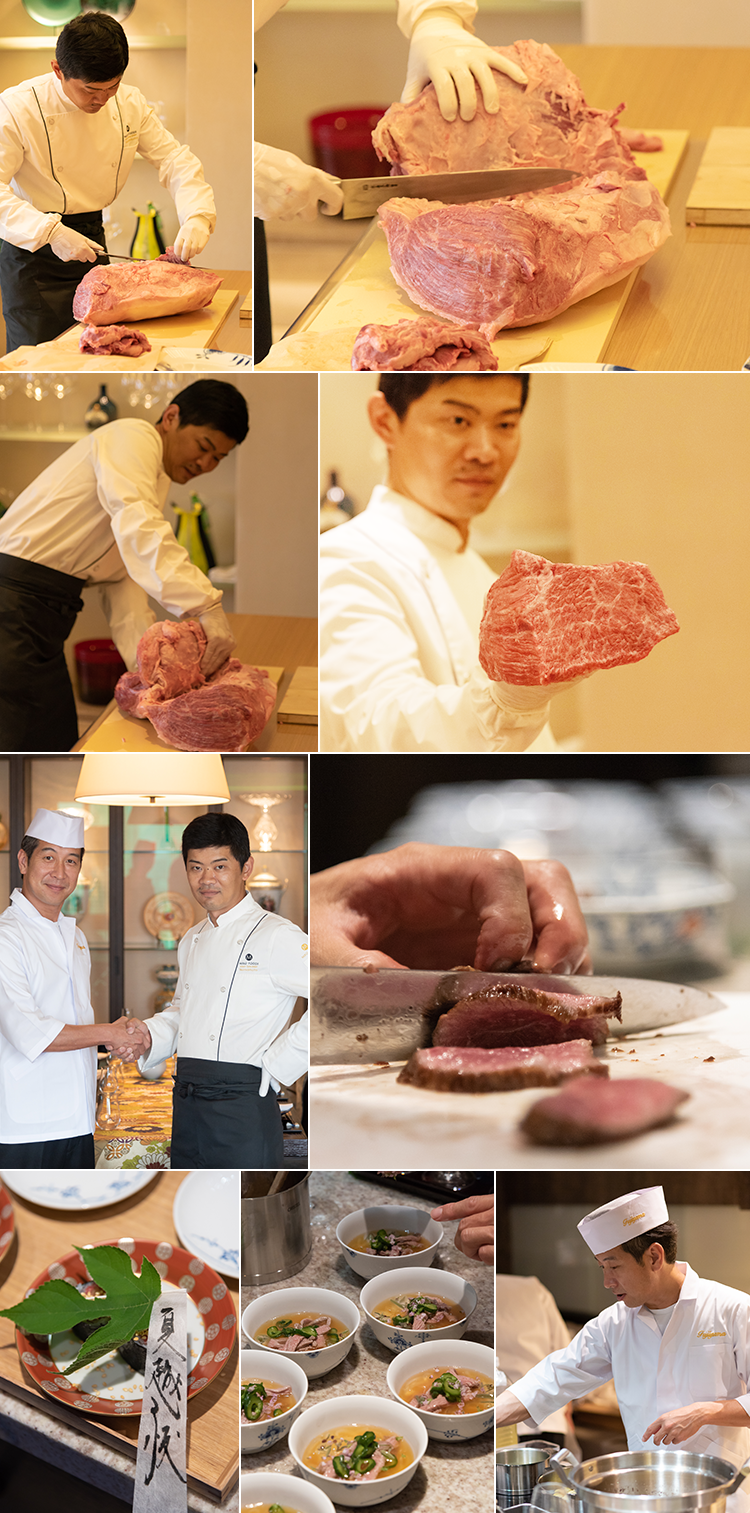
Photo by Juan Carlos PINTO
If you wish to organize a Numamoto Cut Event: Naming Session, please contact us at info@enysi.com. We will make all arrangements for you.
Copy e-mail addressDare! Give your favorite cut a name!
| Goal |
Out of the 120 cuts Mr. Numamoto makes, there are still about 80 unconventional cuts waiting for a name. We are pleased to announce the opening of “Numamoto Cut Event: Naming Session” starting November 2018. Naming rights will be auctioned off for the cuts presented at this event. Attendees who purchase them shall be entitled to “baptize” the bid cut. *Please note that, prior to trademark registration, all names shall be subject to evaluation by a committee which will assess whether these are appropriate. |
|---|---|
| Trademark Registration |
Auction-style (starting bid: JPY 290,000) |
| Cuts Auctioned |
Approx. 80 from a total of 120 cuts |
| Schedule |
Starting December 2018 (Venue, date and time shall be disclosed at any time.) |
| Venue & Chef |
Coming soon |
| Participation Fee |
Coming soon |
If you are interested or wish to participate in the Numamoto Cut Event: Naming Session, please contact us at info@enysi.com.
Copy e-mail address


